How to record huge guitars: 27 secrets revealed
Panel of top producers share their tips
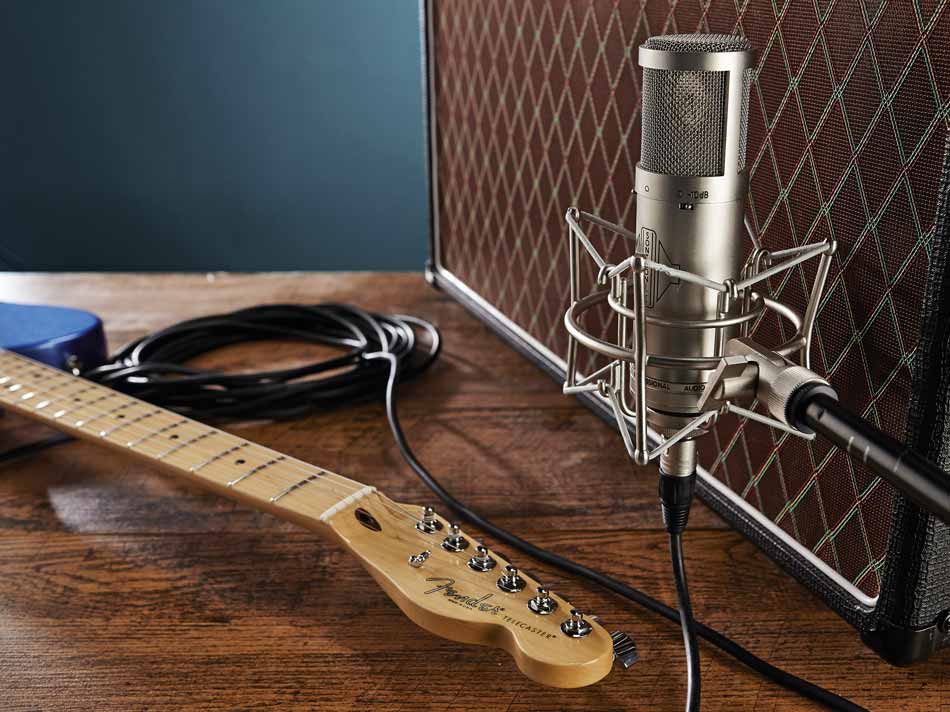
Intro; Composition, arrangement and gear
Most of us have some way of easily recording our guitar parts these days, and while capturing our playing is simple enough, it can often lack the big, wide sound found on professional recordings.
Withe the help of a panel of five top production brains, we're going to show you how you can make your electric or acoustic recordings sound thicker, wider and altogether more huge. So, get your guitar and prepare to go large!
Composition, arrangement and gear
Sounding huge starts with your choice of gear, your settings and what your hands are actually playing! Thinking about these things before you start to record will save you time later, and give you the best shot at making big-sounding professional recordings
1. Get it right at the source
Before you start fiddling with settings, make sure you have the right sound as a foundation, says Joey Sturgis, "If it doesn't sound that great from the beginning, then it's probably not the right tone – that's the rule to live by. The meat of everything is in the tone and the player; once those two things are in harmony then all you're doing is trying to get that extra five per cent in your sound."
2. Inversions
Playing the same notes, but at different points on the guitar is a sure-fire way to fatten up your overall sound. Try playing the same chord progression in two different ways: one as you've written it, and again using different inversions (open chords instead of barre chords, for example).
Romesh Dodangoda: "One of the biggest things in getting a wide guitar sound is to look at what you're playing on the guitar. Sometimes, I will try a different voicing of a chord a guitarist is playing, as you might find a different voicing of the chord naturally sounds bigger. This is a really important step before finding guitar sounds, as this alone can make the guitar sound bigger with more weight to it. Using alternative versions of chords for the left and right sides can also help bring more width to the guitar, as the listener will hear the subtle differences on each side and it can make the guitar feel wider than it is."
3. Keep it interesting
Perception is powerful, and in the same way that the jumpy parts in a horror film are normally preceded by silence, you can add the perception of loudness and power by creating dynamics. It's something Joey Sturgis has become particularly good at. "Look at your song like a movie or a story," he says. "You've gotta have things happen, you can't just have everything full blast from start to finish, because the song just becomes one big brick of boringness. There are a lot of tools to get you there – filtering techniques, automation and the combination of different styles of tones."
Romesh Dodangoda: "If you've got piles of guitars going on in the verse, when you get to the chorus, the guitars may not seem so wide. Have a look at the arrangement and see where you want the guitars to be wide, and this will help you have a better chance of creating the impact in the places you want it to happen."
4. Strings
Andy Snead: "I think you can go too heavy with your strings. If you're going down to a low C then I wouldn't go any heavier than a 0.052. I'm in regular tuning and I use a 0.046. Back in the day, I was always about 0.011 to 0.056s, but there's a certain roundness that you get with that, and I think you need the brightness of thinner strings."
Joey Sturgis: "The thicker the strings, the easier it is to keep all of them in tune over the course of the session. We'll change the strings pretty often, so we need them to be pretty thick. Sometimes you run into situations where the artist wants to play something ina certain way – they want to be able to bend notes a certain way – in those cases we might set up a guitar with a thinner string gauge so they can switch back and forth. If a riff has some vibrato or something in it, we'll switch to that guitar and then go back to the big meaty guitar that stays in tune."
5. Try retuning
Playing in lower tunings makes your tone fatter. Even if your song is in standard tuning, you can add some extra girth by recording one of your tracks in a dropped tuning. Try playing in E//b// or drop D and transposing your part so that the pitch is correct.
6. Working with dropped tunings
Andy Snead: "One thing I noticed early on is it's more down to speakers than amps with drop-tuned stuff. [Celestion] Greenbacks and Vintage 30s tend to work better with dropped tunings because they're a bit more pokey in the midrange. The lower you go, you kind of pull the note out of the string a bit more because a lot of the riffs are single-string riffs, so you're trying to get that tight chunk. At 440Hz, everything sits in its own place a lot better, and the bass has its own place. When you start getting down to a low B you're in trouble: the guitar is where the bass is supposed to be and everything's moving down the spectrum. If you're using those types of speakers in your cabs, you find they're a bit more throaty and you get a bit more of the note out of it."
7. Picking with power
Andy Snead: "You've got all of these amps now with high-gain saturation, you've got a lot of punch there straight away. You should be getting that punch out of your pick attack and digging in hard. If you can wind the gain down and play hard, you'll get a better clarity to your sound."
8. Lower your wattage
To get that cranked-amp sounds at home volume levels, it's often better to drive a smaller amp harder.
Alain Johannes: "I think in the recording environment, you don't need to have giant, loud amps. Use cool-sounding smaller amps so that the actual volume is not killing and destroying. It's almost like mics can't capture that. Just like on some of those great jazz recordings and you hear this drum set sound so wonderful and big, but it's just a little jazz kit with one or two mics – tube mics, nicely compressed that are listening full frequency, and it's not getting destroyed with volume.
"What happens to your ears when you hear something really loud? They close down. So, I like smaller amps. And if I have to use big amps, then I make sure that they're not really as loud. You want the more high-end mics, like ribbon and tube mics that will give you a lot of that depth – the rich, complex overtones you're looking for, that you can't get from a dynamic or the mic that can't handle the SPL super-loud amps."
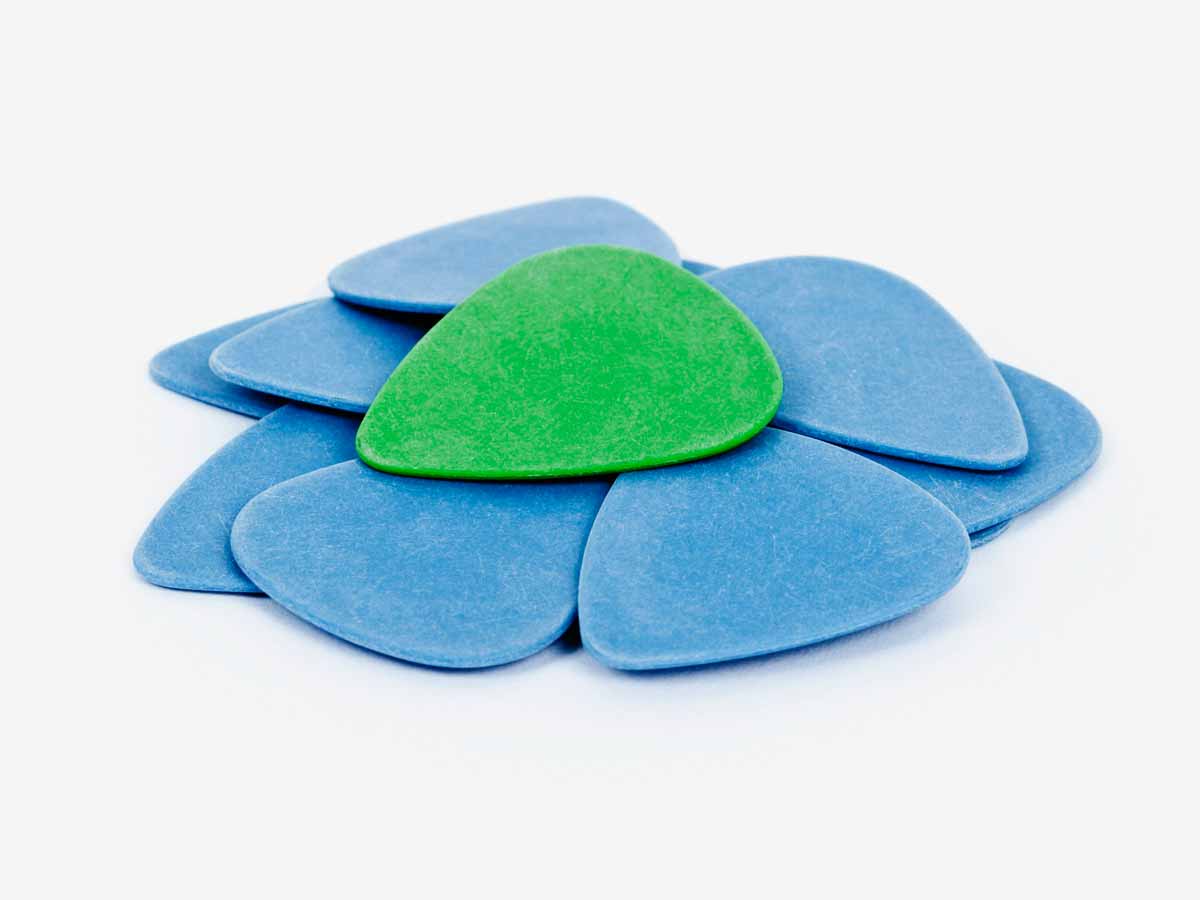
Layering
Very few recordings these days are created using only one guitar track for rhythm and one for lead. If you want your guitars to sound bigger, you're going to need to start building up layers. In this section, we'll cover the best ways to approach this, with tips on how to get away from simply doubling-up your sounds
9. Double-tracking
Double-tracking is one of the most common and simplest ways of beefing up your guitar recordings, and if you're not already doing it, prepare to be enlightened! The principle is simple: record your guitar part, then record it again, but there are a few things you can do to get the most out of double-tracking…
Record your part
It doesn't matter if you're using an amp/mic setup or going direct from an amp modeller or plug-in, the techniques used in double-tracking are the same. Select a new audio track in your DAW, and record your guitar part as usual.
Record it again
Now for the second take. Set up a new track and play record the part again. If you'd prefer to play along to your first track then leave it switched on. If you find this off-putting, then mute it for now.
Pan your tracks
By now you should have two very similar guitar tracks on separate channels. Set them to equal levels on your mixer (make sure they're both un-muted). Sounds bigger, but we're not finished yet. Notice how they're both occupying the same sonic space? Not only do they clash with each other, but they'll be battling your drums, vocals and bass tracks to be heard. Pan one track hard to the left, and one track to the right, and you should find that your whole sound becomes clearer.
10. Mic up your electric!
No, we haven't lost the plot. You can achieve a similarly percussive effect to an acoustic by mic'ing up the strings on your electric. Use a condenser (the strings are obviously very quiet) placed far enough away that your picking hand isn't going to hit it or create noise. Remember, the mic will pick up loud breathing, foot-tapping or creaky chairs, so keep still (remember to breathe though).
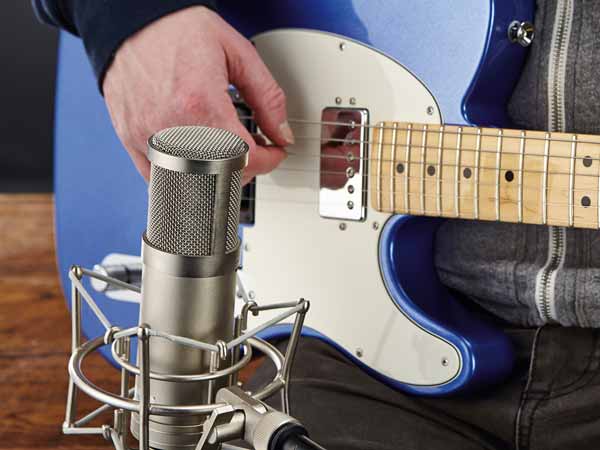
11. Two tracks good – four tracks bad?
If doubling your guitar part makes it sound bigger, then surely recording it four times will be massive? Not always. Done right, it can add dynamics to your arrangements, make your tracks sound wider. Do it wrong and you could find yourself wading through a messy wall of gained-up guitars. Here's what the pros say:
Romesh Dodangoda: "If it's a big rock song, then I may quad track the guitars. I'll use one amp for the main double-track but then I might add another set with a completely different amp (and sometimes guitar). This will add new frequencies and harmonics to the guitar sound, and can help get a 'super-wide' guitar with a lot of texture to it. Quad-tracking will not always work, though. Sometimes, if the guitars are busy, it's best to maybe stick to double-tracking so you keep the clarity rather than having four guitars playing things at slightly different times. Sometimes two guitars can sound bigger and wider than four."
Andy Sneap: "I'll maybe try to stick to two tracks in the verses and then when it gets to the choruses we'll go to four tracks and just tickle those under the other tracks to give it a bit of a lift. If it's more chord-y you'll maybe try to find a different inversion of the chords just to give it a bit more space to it. As soon as you start getting four tracks on there it's amazing how washy it can get, and how you start losing the definition out of the playing. I actually favour two tracks over this quad-tracking-type thing. I want to hear the pick attack. A lot of people think it's bigger because you've got four tracks, where to me it can get a little chorus-y because of tuning and a little washy because of the tightness in people's playing."
Tom Dalgety: "I generally try and make individual sounds as big as possible, rather than just 'tracking-up' things by default. [Mic'ing] is something that I change a lot. I generally like large condensers or ribbon mics on guitar cabs, but then sometimes you can't beat a Shure SM57. I only ever have one mic per cab, though. Obviously I track things up where necessary, but you're better off taking the time to make two or three cool sounds than you are just slapping down 15 crumby ones! I don't really have a limit – you've just got to keep going until its right! But it's more challenging (and often better sounding) if you don't get TOO carried away!"
Joey Sturgis: "I think there's a big misconception about how to get big guitars. People think you need to add more guitar [tracks] to make them sound big. I actually recommend the opposite: I think the less guitars you have, the bigger you can get. If you only have one guitar taking up your left speaker and one guitar taking up your right speaker, you can really push those as far up in the mix as you want. But let's say you have two on each side, now you have to have those turned down in order for both of them to be heard. It's a lot easier to set up one tone that really kills, and kind of does the meat of everything, then just play with that."
12. Vary your setup
Remember what we said about small changes having the biggest impact? By changing elements of your setup in between takes, you can easily add a subtle sense of variation to your tracks. Try a different guitar, pickup position, microphone (or placement). If you're using amp modelling, it's quick and easy to switch to a different model or plug-in, and it'll add an extra layer of interest to the listener!
Tom Dalgety: "It can be nice to vary the gain on the amp/pedals for different passes. That way you get different harmonics coming out of different tracks."
Romesh Dodangoda: "One thing I like to do is use a different amp for the left and right. For example, I might do the left rhythm with a Marshall amp and then for the right side, I'll use the same guitar but I might use a Blackstar amp. I always think it's best to keep the same guitar so that the intonation and the tuning is really close for the two tracks. However, using two separate amps each side is a great way to get a bit of width on the guitar tracks. It also creates an interesting sound. You can use EQ afterwards to get the two sounds to sit with each other, but this is something I do now and again and it can sound great!"
Andy Sneap: "The other thing I've done with bands like Exodus, where it's just Gary [Holt] doing all the rhythm parts, we track a slightly different sound left and right. That can add a little bit more width to the mix. Sometimes doing the same sound left and right can make it a little more demo-like, more boring."
13. Don't cut and paste
Resist the temptation to simply cut and paste the same audio take into multiple layers: it won't gain you anything. In fact, you could even end up taking away from your sound's fullness. This is because – like a machine – your parts will be perfectly in sync with each other, and will contain the exact same harmonic information, causing what's known as phasing. As the two parts coincide with each other, you'll notice certain frequencies start to disappear, leaving you with a thin, swirly-sounding mess!
14. Delay Your Leads
Romesh Dodangoda: "With lead guitars, delay units can be your friend in getting things to sit on the edge of the speakers. Try a 1/4 on the left and 1/8 on the right, for a starting point. The different delay times on the left and right will create the illusion that the guitar is wider. I use this quite a lot for interesting rhythm effects in stereo. Putting the delay in the effects loop or after the mic will give you a cleaner sounding delay, which may sound wider than using a delay straight into the input of the amp. The sound of the delay will be different depending on where you put it in the chain so experiment and see where it sounds bigger to you."
15. Record two amps at once
If you're lucky enough to have two different amps, you could try recording both at once. You'll need to split your signal first using an AB-Y box, and ideally you'll want to set the amps up in a way that keeps the two sounds isolated. While this technique will not give you the same sort of spacial effect as physically double-tracking, it will allow you to blend your sounds.
Alain Johannes: "I like to multi-mic and I like to multi-amp. Usually, I won't mic both speakers or more than one speaker, but I'll definitely have a ribbon room component in there, as well – something that gives it a little depth, you know. I'll play around sometimes putting a mic behind an open-backed cabinet to get that feeling of air pushing. And I like to split the signals to two amps, and on one of them you put a tiny bit of delay so it's wider, a little bit of width, and then just kinda tuck it in."
16. Layer an acoustic
This is a trick that's used to add extra depth to rhythm parts. Grab an acoustic, mic it up (or plug in) and record your chord progression. Don't worry about the sonic qualities; you're after the percussive element of the acoustic's strings rather than a full-bodied sound.
17. Experiment with your gear
You're never going to gig with one, but many artists have utilised the raspy tone of a practice amp to add aggression to their tracks.
Alain Johannes: "If there's an overdub guitar, and you really want the line to poke, why would you use the multi-amp setup you just used for your rhythm track to play that part? You get one of those little practice amps – Pignose or God knows what; some little tiny thing going, 'Bzzz bzzz' – and you put it in there, and you're not going to be able to miss it, like a piano or a tambourine, whether you turn it down or not, it's still there."
18. Use amp modelling!
What used to be a dirty word to tone purists has now become a staple of recording. The good news is that amp modelling is affordable and practical, and it's no longer viewed as 'faking it'. In fact, producer Joey Sturgis actually prefers modelling for heavy tones: "With the stuff that I do, it's pretty much all amp simulators. There are the occasional clients who come in and want to use real amps, and I say to them, 'Are you willing to do a blind test?' Pretty much 99 per cent of the time, people choose the amp simulator."
19. Add air
If you're using an amp modeller or plug-ins to create the bulk of your guitar tracks and finding the results to be a bit 'sterile', think about getting out of the box by adding a mic'd track. Even if you run your effects unit into a small practice amp and mic it up, you'll get an extra texture in your mix.
20. Or create your own…
Joey Sturgis: "If you want more air out of your sound, there are harmonic exciters and other kinds of processors – tape simulators and saturators – that can get you there. You can duplicate your track and high-pass filter the duplicate to add air. If you take one track and duplicate it, then put a high-pass filter on it above 10,000Hz, that track is going to sound like a tiny little hiss. So that's your 'air' track. What you do is turn that down all the way, hit play and slowly bring that fader up and you're gonna hear a little bit of air come into your mix."
21. Record a clean part
Sometimes stacking up a lot of overdriven or distorted tracks can mean that you lose the attack and definition from your notes, particularly on parts with open strings. The solution? Layer a clean part underneath and subtly blend it in! You'll win back your clarity while maintaining the fatness of your drive.
22. Tweak direct sounds
Many amps have direct outputs, but these basically push your signal out after the preamp stage, with a fixed (if any) speaker emulation. The result can be a fizzy and unrealistic tone, but running it through a virtual cab in your recording can give you loads of flexibility. Load up an amp modelling plug-in, and bypass the amp stage – now you can experiment with virtual mic types and placement for a more realistic sound!
23. Cone feel the noise
When it comes to recording, your mic choice and placement will give you as much control over the tonality and character of your sound as tweaking your amp's controls. You have two main decisions to make when setting your mic up in front of your speaker: which part of the speaker to mic, and distance. Placing the mic at the centre of the speaker cone will generally give you the most high end, while moving it towards the edge will capture a darker sound. Moving the mic further away from the speaker will allow you to capture more or less of the room's ambience.
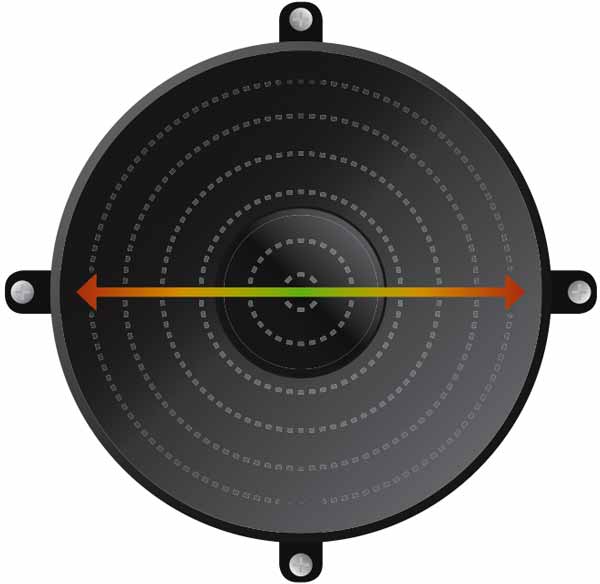
Placing your mic towards different parts of your speaker will achieve a brighter or darker sound
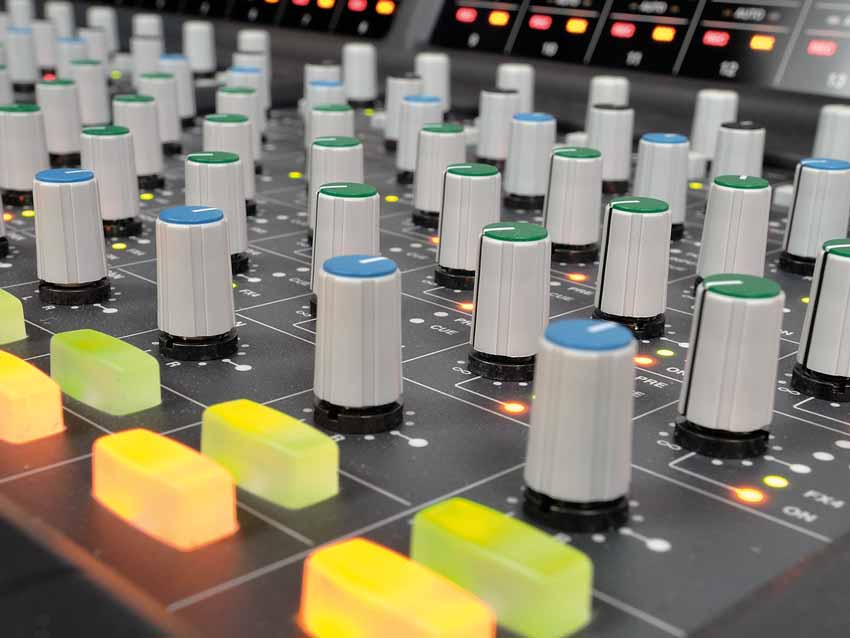
Processing and mixing
Once you've captured your tracks, you're going to need to mix them with the rest of your music. Mixing is a vast topic, but we've distilled some key tips on the best ways to process your tracks
24. Know and use all your placement options
Alain Johannes: "The funny thing about mixing and arranging, I think, is that they're so connected. You get 10 things fighting for the same sonic space – and musical space in terms of double-, triple-, quadruple-tracks. [Arranging] is about making choices so that everything you record has its own natural space, and then mixing it isn't that difficult – you just figure out where to put [the part] in the spectrum. Is it at the front? Is it at the back? Is it behind the track? I like to have multi-layered [sounds] – you can localise things left to right, you can sense them in your face, you can sense them in the distance, you know. There are so many things to play with."
25. Lose some lows
A common trait when recording and mixing guitars is to ramp up your low end. Now, obviously this makes sense if you're going after a particular effect, but as is often the case in recording, moderation is key. When trying to blend your guitar tracks with a bass guitar, you'll find that there are certain low frequencies that will overlap and actually clash, making your overall sound more muddy. If you're in standard tuning, try rolling off your guitar's low end from around 120Hz.
26. Use automation
Plug-ins not only allow us to easily record our guitars, but also let us change our tones during a song. These changes can be recorded by your DAW and recalled as you play through the song. If you need more midrange or extra delay level, for example, in a particular section, let the computer do the work and automate your settings.
Joey Sturgis: "There are a lot of tools that are under-utilised. You can automate almost every parameter in an amp simulator, but a lot of guys just don't do it."
27. Keep the mids
Andy Sneap: "Don't be fooled by trying to suck the mids out and thinking that the scooped sound's gonna give you the [best] sound. It's fun to play with, but you need that controlled tone in your hands. If you can play through a JCM800 without a Tube Screamer or an EQ in front of it and make it sound good, then you're in a good place!"
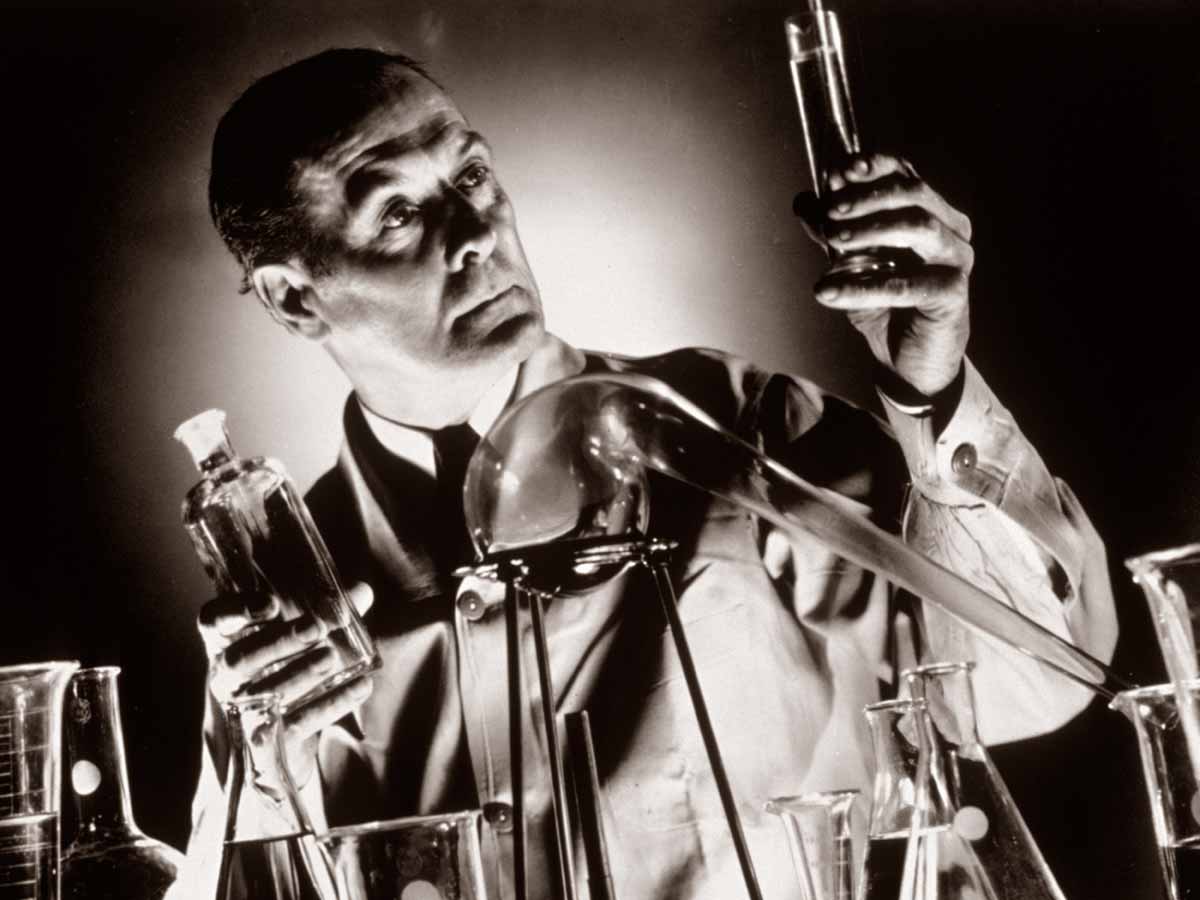
Meet the experts
We pulled together a brains trust of leading experts to help us with this guide. Here are their credentials...
Romesh Dodangoda
Romesh owns and runs Longwave Studios in Cardiff. Over the last decade he has become a go-to producer and mix engineer on the UK rock scene, having worked with Twin Atlantic, Bullet For My Valentine, Funeral For A Friend, Sylosis and many others.
Tom Dalgety
Tom Dalgety's distinctive sounds have earned him production and mixing credits with Band Of Skulls, Opeth, Turbowolf, The Macabees and, most recently, Royal Blood.
Joey Sturgis
Joey Sturgis began recording bands in 2004, and has since gone on to help forge the sound of modern metalcore. He has worked with Asking Alexandria, Miss May I, Emmure, Blessthefall and many more. In addition to this, Joey owns his own plug-in company, Joey Sturgis Tones.
Andy Sneap
Having worked with titans such as Arch Enemy, Megadeth, Exodus and Machine Head, Andy Sneap is one of the world's best-known metal producers. He owns Backstage Studios in Yorkshire, and has also produced numerous software recording tools with Toontrack.
Alain Johannes
As an engineer, producer and mixer, Alain Johannes' credits include Chris Cornell, Arctic Monkeys, Jimmy Eat World, Hilary Duff, Kelly Clarkson and many more. In addition to this, Alain has recorded and toured with a long list of bands and artists, including Queens Of The Stone Age and Them Crooked Vultures.

Stuart has been working for guitar publications since 2008, beginning his career as Reviews Editor for Total Guitar before becoming Editor for six years. During this time, he and the team brought the magazine into the modern age with digital editions, a Youtube channel and the Apple chart-bothering Total Guitar Podcast. Stuart has also served as a freelance writer for Guitar World, Guitarist and MusicRadar reviewing hundreds of products spanning everything from acoustic guitars to valve amps, modelers and plugins. When not spouting his opinions on the best new gear, Stuart has been reminded on many occasions that the 'never meet your heroes' rule is entirely wrong, clocking-up interviews with the likes of Eddie Van Halen, Foo Fighters, Green Day and many, many more.